The past summer, my grandma moved into a new place and needed help moving things around. So, I decided to live with her for two weeks to help her move and enjoy spending some quality time with her.
I quickly sorted my stuff and went into the kitchen to get some water. I was looking for a glass when I glanced at an antique object sitting on the kitchen table, and I couldn’t help but wonder what this old piece of equipment in the kitchen was. I asked my grandma about it. She said that it was an antique coffee grinder that crushed the coffee beans and made coffee. I was shocked to hear that a piece of old equipment is still functional today.
I started researching it and wrote this article to help better guide you about antique coffee grinders. I hope this article provides necessary and relevant information to all coffee lovers wanting to know about antique coffee grinders.
Table of Contents
The History of Coffee:
This might be one of my favorite stories about the origin of coffee. As we have discussed earlier, Turkey and Ethiopia are the places where coffee as a culture began. This is the time when people started consuming coffee in different manners, and it became a part of their culture and life. Whether the following story is true or not, I believe it to be true for my sole sanity and nothing else.
So, the story goes that around 800 A.D, there was a simple goatherd named Kaldi who lived in Ethiopia. One day he noticed that one of his goats was acting a bit strange and had more energy than usual. He saw that the goat was munching on red berries, which gave the goat more power to the point that it could not sleep at night.
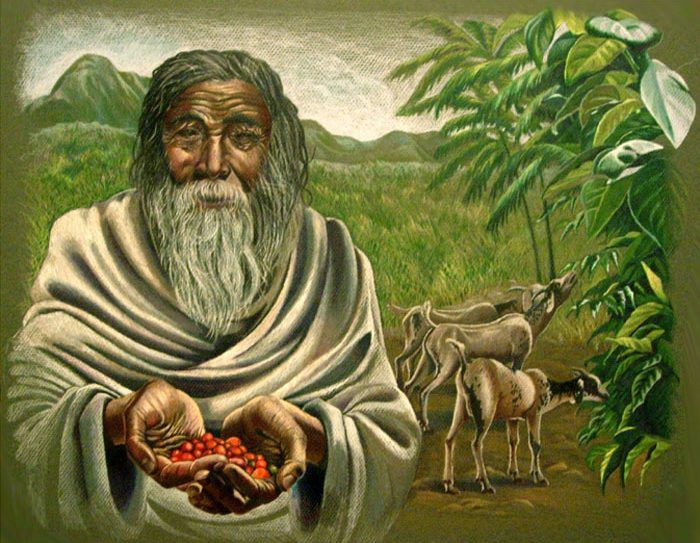
Kaldi worried about the safety of the goat and went on to try the red berries for himself. After trying the berries, the goats and Kaldi danced around together. These red berries were coffee beans from a coffee plant that Kaldi had consumed.
The people of that time were intrigued by this and started consuming coffee. This was also the first time that coffee was used in the preparation of winemaking coffee wine substance for the people.
Whether this happened or not, it would go down as one of the best inventions in human story!
Coffee Grinders – A Brief History:
As the name suggests, a coffee grinder is a device used to grind and crush coffee for consumption. It works as a sharp wheel-cutting tool. Each grain on the wheel’s surface cuts a small chip from the workpiece.
To know about the history of coffee grinders, one must first be aware of the origin of coffee and the original coffee grinders in the world. In ancient times, coffee was primarily used in Turkey, Africa, and Ethiopia. It can be dated all the way back to the 800 A.D when ancient Ethiopians used to take coffee beans and glaze them over a fire to use them commonly.
Coffee beans are pretty hard on the outside and will get stiff if not appropriately treated; many of the workforce would be exhausted while trying to pry the shell open and then crushing the coffee beans for consumption.
To avoid this unnecessary exhaustion of human resources, the first-ever coffee grinders were invented by mortar and pestle. I’ll admit that they aren’t a decoration piece for the house, but they get the job effectively and efficiently!
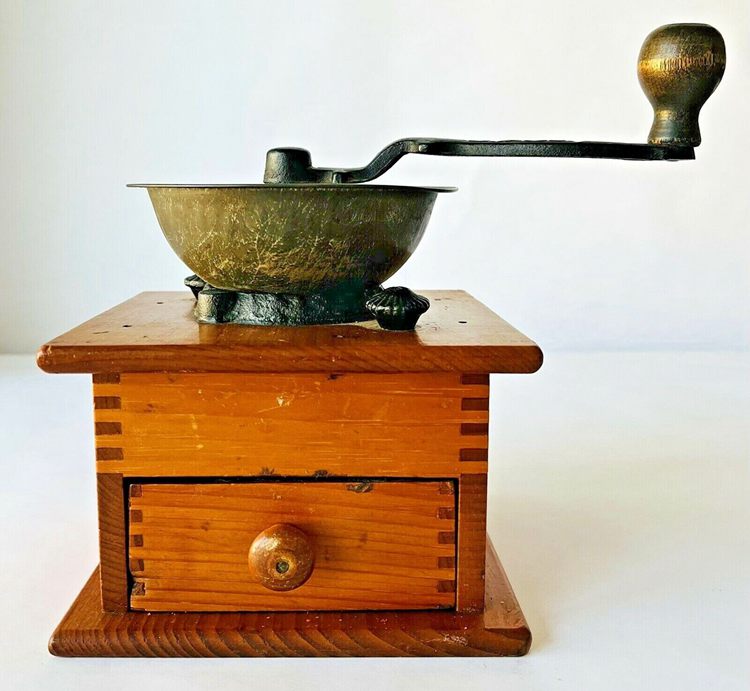
Specific stones and pieces of wood were used for this process. Some say that the stone and wood pieces used to crush coffee beans added some aroma and unique texture to the product. Therefore the Ethiopians basically worshiped coffee in this era.
There is no truth to these rumors, but I must admit, it does sound quite fascinating.
The concept of mill was then introduced in 1350 B.C by the Greek people to crush and grind products more effectively. A mill is a machine that crushes and grinds products such as sugar, spices, coffee beans, etc. into powder or small pieces.
The first ever spice grinders were then invented in the fifteenth century by Modern Day Turkey. Like the people of Ethiopia, the Turkish people also treat coffee with tremendous respect as coffee became a part of their culture early on and, ultimately, a part of their life.
Turkey invented a particular type of grinder that was used for crushing both coffee and spices. This state-of-the-art machinery is said to be ahead of its time as people still grind spices and coffee using it.
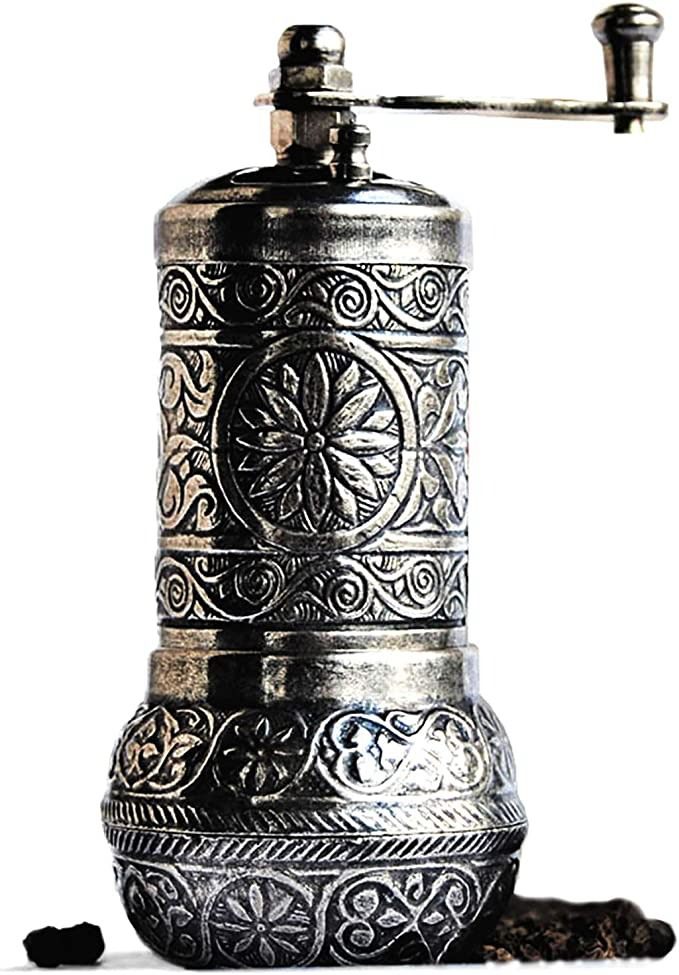
These grinders are so popular that they are sold worldwide for their beauty and extravagance when it comes to grinding. Over the years, people have kept these grinders for more of an artistic touch rather than breaking down spices and coffee beans. Still, it is to be noted that these were the first pieces of machinery that made a global impact.
The first traditional grinder was mortar and pestle grinders that were made of wood and stone to crush and grind coffee. This paved the way for the grinders used today and paved the road to innovation.
Then In the 1600s, German inventor Franz Dietrich Graue patented a coffee grinder that used rollers to crush coffee beans. This design was improved upon by English inventor James Addison, who created a grinder with two sets of rollers in 1828.
The grinders kept on getting better and better as the technology advanced in the period. But we have our forefathers to thank when we sip some hot coffee in the morning.
The first coffee mill, made specifically to grind coffee beans, was invented by Englishman Nicholas Book in the late 17th century. Coffee was placed on the top of the lever device and ground into a bottom drawer.
This innovation provided a vast market segment for big companies to come in and start manufacturing as the demand for coffee and coffee grinders was increasing.
Coffee grinders then arrived in the United States of America, and Thomas Bruff was the first American to be given a patent for coffee grinders. Then in 1828, Charles Parker from Connecticut was contracted to improve the design of the grinders.
In 1870, the grinder “Champion 1” was invented; this was a massive success as it was soon used around the country to grind coffee beans.
Hobart manufacturing company introduced the first belt grinder. It was the first device that used electricity. The design was modern for the time but depended on innovation for its success.
Antique Coffee Grinders Identification:
Antique coffee grinders are very hard to identify as the manufacturing and material vary from place to place. Essentially all coffee grinders that were manufactured over 100 years ago are antique. These objects resemble a piece of history and are treated like exquisite art pieces or collector’s items for the passionate.
Whatever your desire for antique coffee grinders, one must be able to tell an antique coffee grinder from a modern one or a fake. They generally have a wood or a metal body with a handle on one side and a hopper on the other; this is where the coffee beans are placed.
The beans are then crushed by turning the handle as it is displaced into the plate under.
Antique coffee mills are generally small as they are kept more as decoration pieces for their beauty, making them functional decorative machines. Antique manufacturers of coffee grinders include Arcade, Landers Frary and Clark, Logan and Stonebridge, Parker, Wilmot Castle, Wrightsville Hardware Company, etc.
Let’s take a good look at how to correctly identify antique coffee grinders:
Design:
Design is one of the most prominent things on a coffee grinder. It can quickly help us identify an antique grinder then a modern one. The style and design will make it easier the identification the piece.
This is because specific designs and styles were used for certain periods.

Material:
Antique coffee grinders were mostly made up of wood or iron material. Wood was used in the 17th century, and iron was used in the 19th century. This was because it was manual and easy to make at the time and provided people with the coffee constraints of their choice.
Size:
The earliest recollection of the coffee grinders reveals that they were relatively small compared to the modern grinders; this was because it was easier to transport them from place to place and easy to trade off, while modern grinders are big in size for commercial and wide usage.
Weight:
It is not the best identification method, but it can be pretty helpful in getting an idea. Since antique coffee grinders were made of wood and metal, most of them are extremely heavy, size and weight being disproportionate. On the other hand, modern grinders are lighter, owing to the wide availability of better materials in the market. Coffee grinders, in fact, have come a long way in history!
Manner of Construction:
The oldest manner of construction for grinders was that they were all made from wood so that the coffee beans were crushed efficiently. After some period, both metal and wood were used to create these pieces.
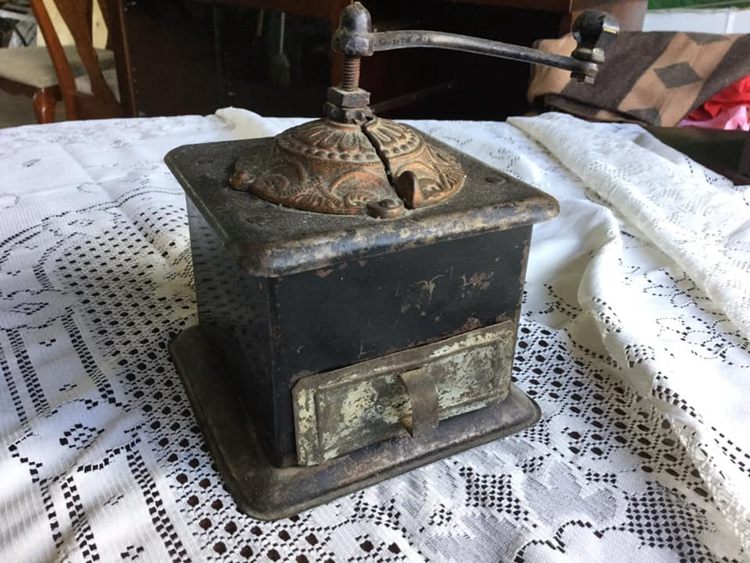
This helps in the identification process when you’re in the market searching for the perfect object for your collection.
Expert Analysis:
The identification will become more accessible as a person continues learning more about the coffee grinders industry. Getting professional appraisals for your object might be the best choice if it’s readily available. On the other hand, several guides are available in the market that you can use to research antique coffee grinders.
Visit online auction houses and go to antique shops in hopes of extracting more information to become a better identifier of these old-fashioned coffee grinders.
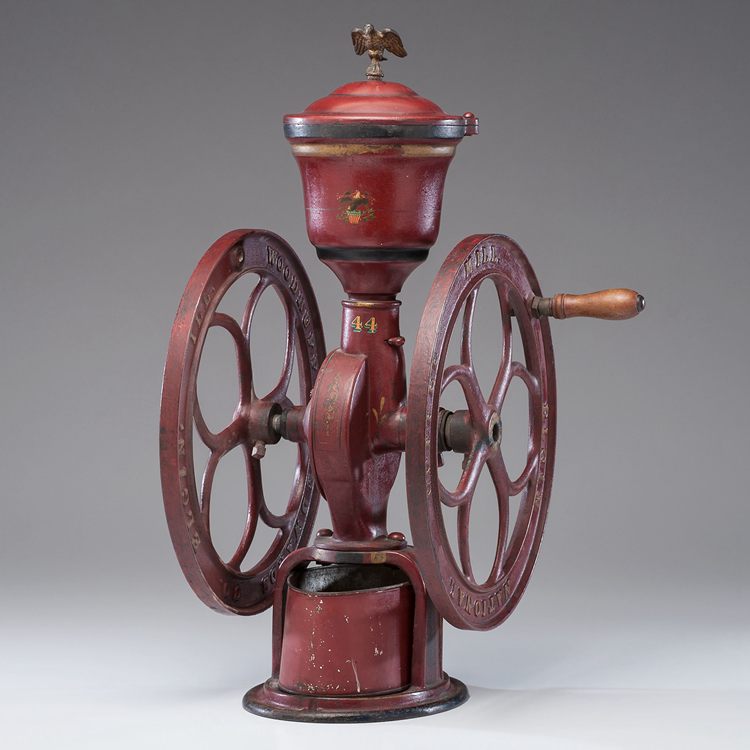
Price:
This is not a very accurate way of identifying a grinder, as the price depends on the condition, rarity, and other factors. So, to assume that any expensive grinder would also be antique is not valid. But it can help identify the whole batch.
Moving onto the characteristics that affect the value of an antique coffee grinder.
Antique Coffee Grinders Value Guide:
Whether you’re staying up late working on a project or chilling with a friend on a trip, coffee is always the answer! Coffee grinders have a significant impact when it comes to having one in your kitchen or just lying on the shelf of your antique room.
Getting your hands on the “right piece” might be daunting, but this value guide will hopefully make things easier for you!
Rarity:
The rarity of a piece dramatically influences the price of an antique coffee grinder. This generally stands true for all sorts of arts and vintage items. Rare articles were produced in lesser amounts and, thus, are more challenging to find compared to the modern grinders made by the millions to meet the demand; back in the day, this was not the case. A rare collectible item will also be expensive, but it is more likely to be antique.
Condition:
A good quality grinder helps determine value by assisting the collectors to date it back to its manufacturing era. Also, it brings more value to the product as the standard thing noticed in antique pieces is terrible quality. Still, a good, conditioned piece will make it more reliable and expensive.
Collectors are also more likely to bid on a good quality antique coffee grinder than a bad quality one.
Markings:
If the grinder is in good condition and the markings are visible on the grinder, it is the best way to date an antique grinder. The manufacturer’s name or the patent date will help us appropriately value the antique pieces’ manufacturing date.
The brand name can also help narrow down the manufacturing of the pieces and determine the price. The earliest patent given to an American was in the year 1828. This means that a United States-based manufacturer could not have manufactured any grinder.
Cracking and Rust:
Antique coffee grinders were anciently made of wood and iron, the materials readily available at the time. These materials also influence the grinders’ value as some may be rusted and cracked.
Wood cracks in humidity, and iron develops rust over time. Although these will affect the price and condition of the pieces, it is still a valuable way of identification for antique coffee grinders.
Functionality:
As with any antique, the proper and correct functioning of all equipment parts adds value. Suppose your antique is in sublime shape and all features function efficiently. In that case, it will go for a much higher price than its counterpart with broken or non-functioning components.
Antique Coffee Grinders Price:
The value of antique coffee grinders can range from a couple hundred dollars to thousands, depending on the piece. Many factors influence the price of the grinder, including the rarity, condition, design, markings, construction, and material already covered in this article.
For a piece maintaining the age of 100 years to still be only worth $100 is quite extraordinary. This is because the coffee culture hit the whole world like a storm in the 18th century. The coffee grinders and mixture were already exported to many other countries from Turkey and Ethiopia, and the culture of coffee made it almost impossible for these countries to maintain their production processes.
So many other companies and merchants started selling coffee and coffee grinders during this period to meet the demand requirement and make a profit.
It is also highly advisable to get a professional appraisal for the valuation process, as the experience and knowledge will help you get value for the antique piece and will also allow you to conduct this manner for inspection by yourself in the future.
Multiple sources on the internet claim to provide free appraisals for your antique. However, most of them have several strings attached, so make sure you don’t end up putting yourself in a trap.
Conclusion:
Coffee is one of the world’s best inventions, considering that it is consumed so heavily in the modern age. The boost of energy one must get after that first sip is quite remarkable. See how the process of crushing and grinding has changed for coffee is the earliest form of innovation in the history of mankind.
It is crucial to understand the identification methods of antique coffee grinders in an era where it’s tough to get what you want in such a diverse and saturated market.
I believe that whether you are a first-time buyer or a professional collector of these old items, you must be aware of how to identify an antique coffee grinder and how you can get value for your money.
It is important to note that the design, material, complexity, manufacturing, weight, rarity, condition, quality, size, etc., will help you purchase the collection or passion you have.
By understanding the different features and markings that indicate age, you can ensure that your piece is valued at the right greenback!






![Vintage Schwinn Bikes: [Types, Identification, and Values]](https://www.txantiquemall.com/wp-content/uploads/2022/05/5.-Schwinn-1967-Ramshorn-Fastback-Stingray-Sky-Blue-vtg-600x450.jpg)
